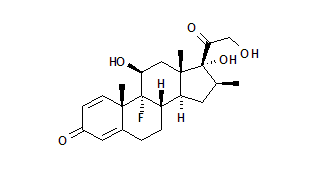The generic pharmaceutical industry has been sailing along at a steady clip over the past year, with progressive activity in all facets of the industry. To the industry's credit, sales of generic drugs reached $5.8 billion in 1997, a 4.9 percent increase over 1996; 431 abbreviated new drug applications were approved (up from 351 the previous year); and current industry-related legislation is being challenged by industry associations and manufacturers alike. While sales of generic drugs have trended up, prices have not. From the first quarter of last year to the same quarter this year, prices dropped 5.4 percent, according to IMS Health, a Plymouth Meeting, Pa.-based research firm. "Deflation in the generics market has returned to the level it was in the early '90s, when people started watching prices and there was potential government healthcare reform," said Sue Capps, senior manager of pricing studies at IMS Health. "If you want to look at the broad picture, this is one of the biggest changes we're seeing now. Prices are hovering around 5.5 percent to 6 percent deflation." Generic manufacturers, however, are coming to a point where they cannot afford to tolerate further price decreases, Capps pointed out. In fact, she said, "Some manufacturers have begun selectively, in some products, raising their prices in order to stay competitive. It's too early to say that price increasing is a trend, but I have heard some manufacturers say they plan [to continue selective price increases]." Mylan Laboratories was the first to dip into the price-increase pool, raising wholesale prices on 14 of its products. The company explained the increases by saying that it was losing money on 41 of its 97 products and raised prices based on a number of other factors, including raw material costs, regulatory approval delays and branded company-filed lawsuits. Last month, the Federal Trade Commission was involved in an antitrust probe into Mylan's increases. Mylan, at press time, was still in the several-month-long process of submitting information to the FTC. Barr, Watson and Purepac are also among those that have received either subpoenas or requests for information. Those who react negatively to current price-raising activities are forgetting something, observed Gruntal & Co.'s David Saks, an analyst of pharmaceuticals, generic drugs and biotechnology. "Even after the price increases, these generic drugs are still selling at a rate significantly below what the brand costs," he explained. "Everybody wins, believe it or not, with these price increases. The drug companies have more money for research, there is increased value for the shareholders and the consumer still has a product that is less expensive." Crowded markets are also having an impact on generic pricing. Naturally, the more manufacturers there are producing a particular drug, the more price pressure. "A difference in the prices that the generics have and how fast they drop is affected by how many players there are with a particular product," Capps observed. "That forces the price to go down, which means it becomes difficult for everyone who has a product in that market." This cause and effect may force manufacturers to rethink their product lines, Capps said. However, some manufacturers are taking exactly the opposite approach, increasing the number of products they offer in an effort to protect themselves against losses on any one product. "[Manufacturers] are not counting on their revenues coming in from one line," Capps said. "They're not putting all their eggs in one basket. Everything is spreading out and not being dominated by one class of drugs." Another area of business in which generic manufacturers may benefit in the long run is the increasing trend toward differential co-pays on the part of the managed care systems. "With the cost burden being shifted' more to the consumer, the consumer is more likely to choose a generic," Capps said. "This could be a significant opportunity for the generic companies." The generics industry holds fast Despite the ceaseless legislative issues the industry faces, generic manufacturers are holding their own and "aren't going anywhere," Capps observed. In terms of products in development now and those to come when branded patents lapse, the generic industry is healthy. While 1997 was a comparatively slow year in terms of products coming off patent, 1998 and the next few years look promising, with more than 10 drugs coming off patent in '98 and more than 40 in the next five years. "The generic industry is in the best position it's been in," Saks said. "[Generic manufacturers] are enjoying the best of times because there is more consumer interest in their drugs." This makes for an increased potential for financial success in the industry today, which is incentive for generic manufacturers to develop products as drugs come off patent years out, he said. "The generic industry is in an entirely new place, a different place from a year ago," Capps said. "You have some manufacturers coming out and saying they're going to raise prices on selected product lines. Prices had been dropping so low that manufacturers are now trying to find a new paradigm to remain profitable. This will be interesting to see how it all shakes out in the coming months."
COPYRIGHT 1998 Lebhar-Friedman, Inc.
COPYRIGHT 2000 Gale Group



